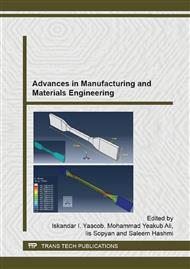p.133
p.137
p.142
p.146
p.150
p.156
p.160
p.166
p.170
Effect of Rice Husk Ash (RHA) on Physical Property and Mechanical Strength of Concrete
Abstract:
Fast depleting natural resources, huge consumption of energy, and environmental hazards involved in the production of cement has inspired researchers to find partial replacement of cement using other or similar materials. Rice husk ash (RHA), an agricultural waste, is classified as “a highly active pozzolan” because it contains a very high amount of amorphous silica and a large surface area. Rice husk is natural fiber that has the advantages of low density, low cost and biodegradable. In Malaysia paddy is grown locally especially in northern states of Peninsular Malaysia. Rice husk is a by-product of paddy being process into rice. These make it a natural candidate for cement replacement agent especially in Paddy producing countries. In this paper, RHA was introduced as the micro filler in concrete mixtures. The replacement of RHA which is lighter as compared to the Ordinary Portland Cement results in decreasing density of cement fiber composite and less permeable concrete.
Info:
Periodical:
Pages:
150-155
Citation:
Online since:
July 2015
Authors:
Price:
Сopyright:
© 2015 Trans Tech Publications Ltd. All Rights Reserved
Share:
Citation:


